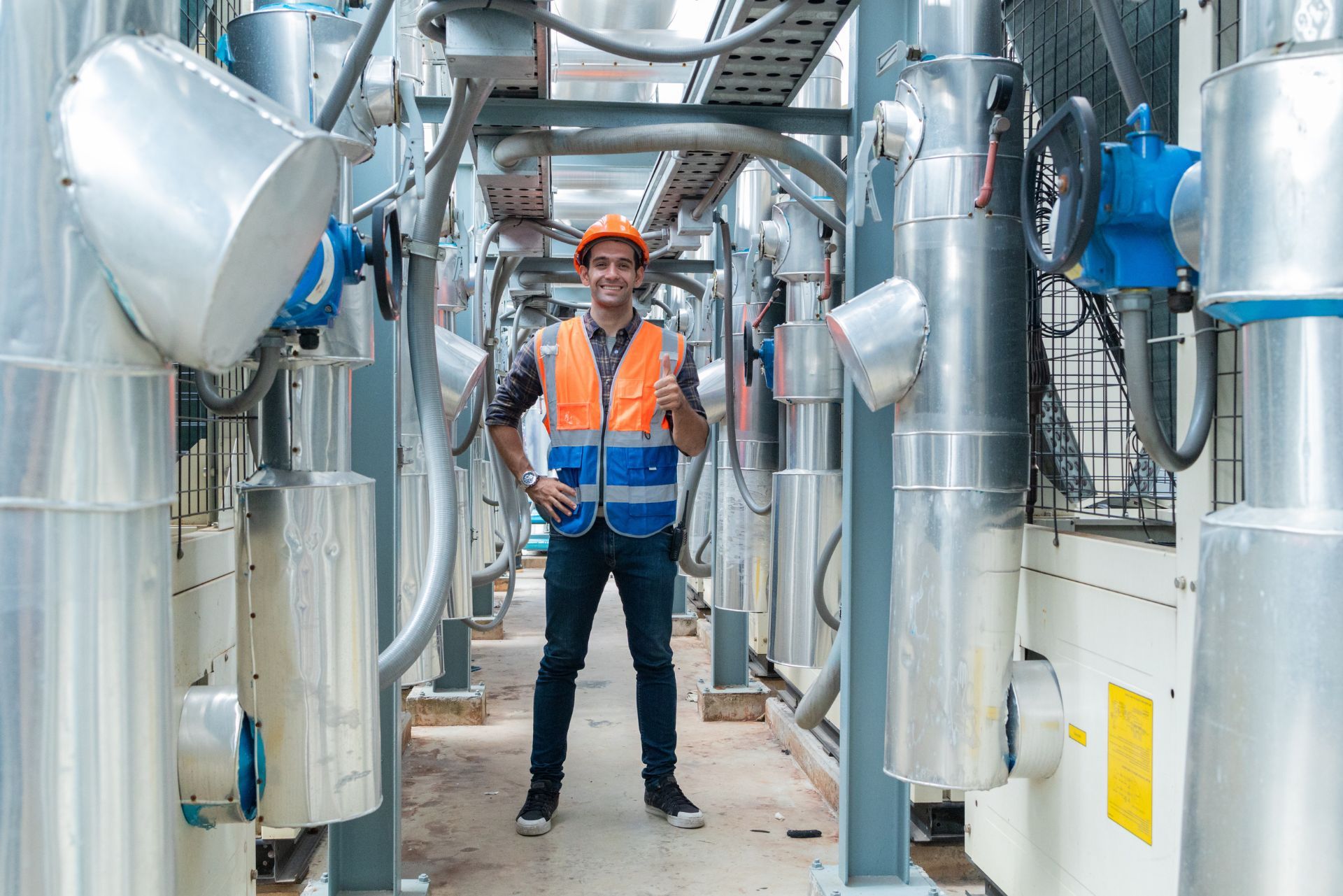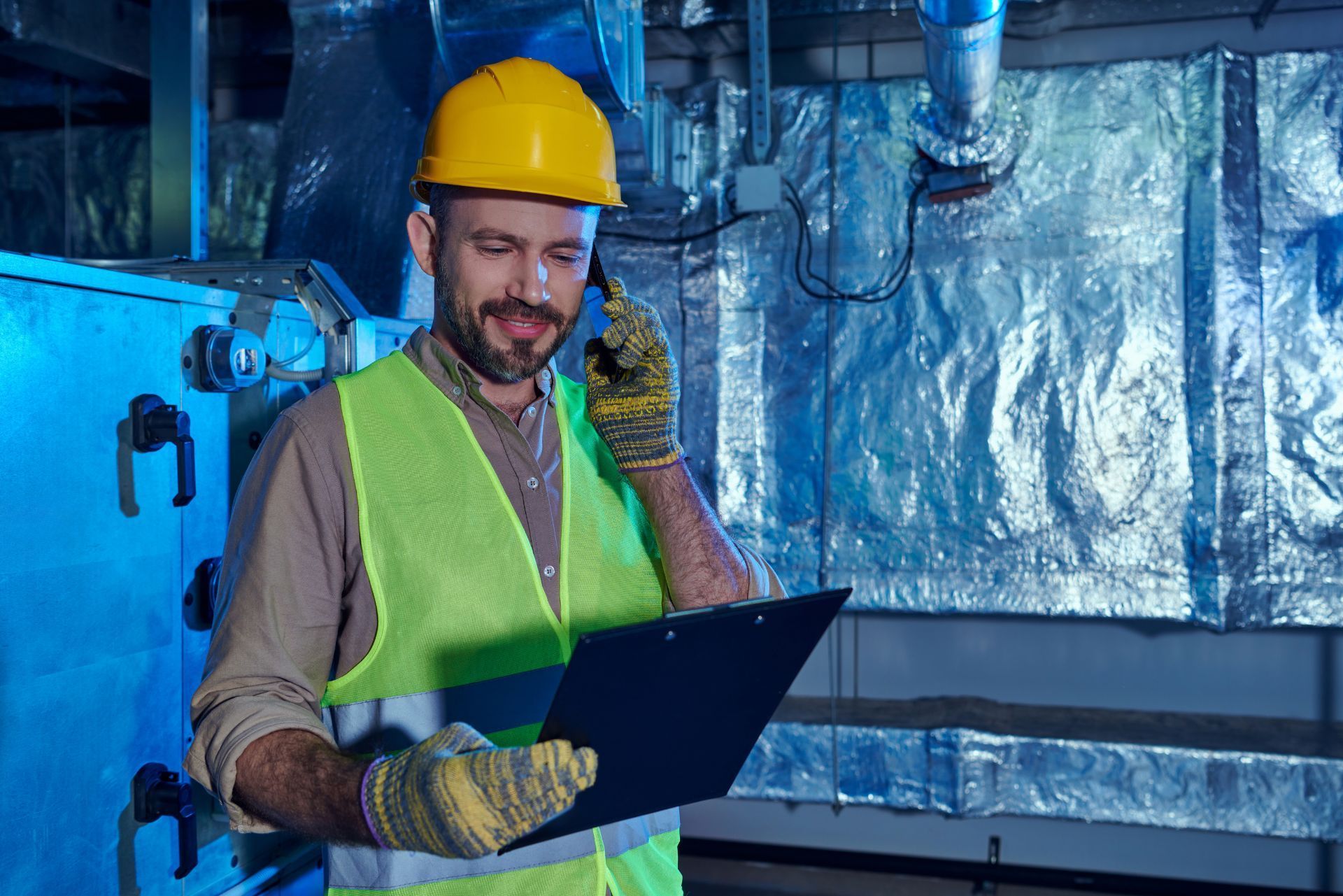Top 3 Recommended Policies

For HVAC contractors, safeguarding your business assets is not just prudent—it’s essential. Commercial property insurance plays a critical role in protecting your equipment, tools, and premises from unforeseen risks. As the insurance landscape evolves amid rising costs and increasing climate threats, understanding the nuances of commercial property insurance can help HVAC professionals make informed decisions that secure their livelihood.
In this article, we’ll explore everything HVAC contractors need to know about commercial property insurance, including current market trends, risk factors, coverage essentials, and strategies to mitigate costs. With insurance premiums projected to rise significantly due to climate risks and construction cost inflation, staying ahead of these changes is more important than ever. For instance, the average monthly cost of insurance for a commercial building in the U.S. is expected to increase nearly 80% by 2030, highlighting the urgency for contractors to evaluate their coverage carefully. Facilities Dive provides an insightful analysis on these rising costs driven by climate change.
Understanding Commercial Property Insurance for HVAC Businesses
Commercial property insurance is designed to protect the physical assets of your HVAC business, including your office, workshop, tools, and specialized equipment. This coverage typically safeguards against losses due to fire, theft, vandalism, natural disasters, and other perils. For HVAC contractors, whose work often involves expensive machinery and vehicles, this insurance is a vital safety net.
However, not all policies are created equal. It’s crucial to understand what your policy covers and where gaps might exist. For example, many policies exclude certain climate-related damages or have high deductibles that can affect claims payouts. Henry Daar, head of U.S. property claims at Willis, points out that insurers are increasingly adjusting deductibles and rates, especially in high-risk areas, to manage unpredictability in underwriting practices. Insurance Business Magazine offers expert insights into these evolving underwriting trends.
Key Components of Coverage
Typical commercial property insurance policies for HVAC contractors include:
- Building Coverage: Protects your physical premises, whether owned or leased.
- Equipment and Tools Coverage: Covers specialized HVAC tools and machinery essential for your operations.
- Business Personal Property: Includes office furniture, computers, and other non-fixed assets.
- Loss of Income: Provides compensation if your business operations are disrupted due to covered damages.
Ensuring these components are adequately covered is vital, especially given the rising costs of construction and equipment replacement. Additionally, HVAC businesses often face unique risks associated with their operations, such as liability claims stemming from installation errors or equipment malfunctions. Therefore, it’s essential to consider supplemental coverage options, like general liability insurance, which can protect against third-party claims for bodily injury or property damage resulting from your work. This can provide an extra layer of security, safeguarding your business from potentially devastating financial repercussions.
Moreover, as technology continues to evolve, HVAC businesses are increasingly incorporating advanced systems and smart technologies into their services. This trend not only enhances efficiency but also introduces new risks, such as
cyber threats related to connected devices. As a result, some insurers now offer endorsements or specialized policies that address these emerging risks, ensuring that your business remains protected in a rapidly changing environment. Staying informed about these developments and regularly reviewing your insurance policy can help you adapt to the evolving landscape of risks associated with the HVAC industry.

Market Trends Impacting Insurance Costs for HVAC Contractors
The commercial property insurance market has experienced significant fluctuations in recent years, influenced by climate change, inflation, and construction cost increases. For HVAC contractors, these trends directly impact premium costs and coverage availability.
One notable trend is the projected 80% increase in average monthly insurance costs for commercial buildings by 2030, driven largely by escalating climate risks such as extreme weather events. This trend is compounded by rising construction costs, with nonresidential construction expenses increasing by 37% over the past four years. Fabricated structural steel prices have surged by 65%, and concrete products by 37%, all of which contribute to higher replacement values and, consequently, insurance premiums. Cleary Insurance provides detailed data on these construction cost trends.
Despite these pressures, the market is showing signs of moderation. After nearly a decade of rising premiums, the U.S. commercial property insurance market has entered a softening phase, with premium declines beginning in 2024. This shift offers some relief to insureds, including HVAC contractors, but it’s important to remain vigilant as underwriting remains tight in many regions. Insurance Business Magazine highlights this evolving market dynamic.
Climate Change and Risk Mitigation
Climate change continues to be a dominant factor influencing insurance pricing. Dale Porfilio, Chief Insurance Officer at the Insurance Information Institute, emphasizes that increasing climate and catastrophe risks, particularly from secondary perils like flooding and windstorms, are driving losses and shaping pricing strategies. HVAC contractors working in vulnerable regions should consider these risks carefully when selecting coverage and may need to invest in mitigation measures to reduce premiums. Triple-I’s report offers valuable insights into these risk factors.
Furthermore, HVAC contractors are encouraged to adopt proactive risk management strategies to not only safeguard their operations but also to potentially lower their insurance costs. This may include conducting regular risk assessments, enhancing building resilience through improved insulation and energy-efficient systems, and investing in advanced technology that can predict and mitigate the impacts of extreme weather. By demonstrating a commitment to risk reduction, contractors may find themselves in a better position to negotiate favorable terms with insurers, as they present a lower risk profile.
Moreover, the integration of sustainable practices in HVAC operations is becoming increasingly relevant. As clients and regulatory bodies push for greener solutions, contractors who prioritize eco-friendly technologies may not only attract more business but also benefit from insurance incentives aimed at promoting sustainability. Insurers are beginning to recognize the value of such initiatives, potentially offering lower premiums to those who implement energy-efficient systems or utilize renewable energy sources, thus aligning with broader environmental goals while managing costs effectively.
Common Challenges HVAC Contractors Face with Commercial Property Insurance
One of the most pressing challenges in the commercial property insurance space is underinsurance. A study by Kroll found that 90% of buildings were underinsured, with 68% of those valued between 2020 and 2021 underinsured by 25% or more. For HVAC contractors, this means that many may not have sufficient coverage to fully replace or repair their assets in the event of a loss, leading to significant out-of-pocket expenses. Insurance Information Institute highlights the critical importance of accurate property valuations.
Another challenge is the tightening of underwriting standards. Insurers are increasingly scrutinizing risk profiles and may impose higher deductibles or exclude certain coverages, especially in regions prone to natural disasters. This can make it more difficult and expensive for HVAC contractors to secure comprehensive coverage without careful risk management and documentation. Additionally, the evolving landscape of climate change has led to increased scrutiny from insurers, who are now more cautious about underwriting policies for businesses operating in areas that are frequently impacted by extreme weather events. This heightened risk perception can complicate the insurance procurement process for HVAC contractors, who must navigate these challenges while ensuring their operations remain viable.
Strategies to Avoid Underinsurance
To avoid costly gaps in coverage, HVAC contractors should:
- Conduct regular and accurate valuations of all business assets, including tools, equipment, and property.
- Work with insurance professionals who understand the specific risks associated with HVAC operations.
- Review and update policies annually to reflect changes in business size, equipment, or market conditions.
- Consider endorsements or additional coverages for high-value or specialty equipment.
Furthermore, HVAC contractors can benefit from implementing a proactive risk management strategy that includes regular training for employees on safety protocols and equipment handling. By fostering a culture of safety and awareness, contractors can reduce the likelihood of accidents that might lead to claims, thereby improving their risk profile in the eyes of insurers. Additionally, maintaining detailed records of maintenance and repairs can provide valuable documentation that demonstrates a commitment to asset preservation, potentially leading to more favorable insurance terms. Engaging in community initiatives or partnerships can also enhance a contractor's reputation and may positively influence their relationship with insurers, as they are seen as responsible and engaged members of the community.
Tips for HVAC Contractors to Manage Insurance Costs
While rising insurance costs are a reality, HVAC contractors can take proactive steps to manage premiums without sacrificing essential coverage.
First, risk mitigation is key. Implementing safety protocols, maintaining equipment properly, and investing in property upgrades can reduce the likelihood of claims. Insurers often reward businesses that demonstrate strong risk management with more favorable rates. For instance, conducting regular safety training sessions for employees not only enhances workplace safety but also fosters a culture of awareness and responsibility. Additionally, keeping detailed records of maintenance schedules and safety audits can serve as valuable documentation when negotiating with insurers.
Second, shop around and compare policies. The softening of the commercial property insurance market means there may be more competitive options available in 2024. Working with brokers who specialize in contractor insurance can help identify policies tailored to your needs. It's also beneficial to review your coverage annually, as your business's needs may change over time. By reassessing your coverage and exploring new providers, you can ensure that you are not only getting the best rate but also the most comprehensive protection for your specific operations.
Finally, consider adjusting deductibles strategically. While higher deductibles can lower premiums, they also increase out-of-pocket costs in the event of a claim. Finding the right balance based on your risk tolerance and financial capacity is important. It may be wise to analyze past claims history to determine the likelihood of needing to file a claim, which can inform your decision on deductible levels. Additionally, some contractors find it beneficial to establish an emergency fund to cover potential deductible costs, allowing for greater flexibility in choosing a higher deductible option.
Leveraging Market Developments
Recent market developments indicate a potential turning point. After a challenging 2023 marked by consistent premium increases, signs of moderation have emerged this year. HVAC contractors should stay informed about these trends to capitalize on better pricing opportunities as the market softens. CBIZ’s market insights provide a comprehensive overview of these changes. Furthermore, understanding the broader economic factors influencing insurance rates—such as natural disasters, labor shortages, and changes in regulations—can empower contractors to make informed decisions regarding their insurance strategies. Networking with other professionals in the industry can also yield valuable insights and shared experiences that can help navigate this evolving landscape.

Conclusion: Protecting Your HVAC Business with the Right Insurance
Commercial property insurance is an indispensable component of risk management for HVAC contractors. With rising insurance costs driven by climate change, inflation, and construction expenses, it’s more important than ever to understand your coverage, avoid underinsurance, and implement strategies to manage premiums effectively.
By staying informed about market trends, working closely with insurance professionals, and adopting sound risk mitigation practices, HVAC contractors can secure the protection they need to keep their businesses resilient and thriving. Remember, the right insurance coverage is not just a cost—it’s an investment in the long-term stability and success of your business.
Contact Us
